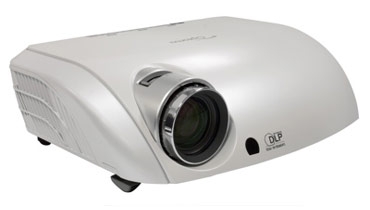Stretch Your Screen -- and Your Pennies Page 2

DOING IT YOURSELF
Now that we've discussed the accepted, legitimate, squaresville, high-roller way to do constant-height, let's get into something way, way, way cheaper. There's a whole 'nother category to consider, which I'll call "guerrilla two-three-five." With guerrilla 2.35, constant-height doesn't cost $40,000. It doesn't even cost $4,000. No, it costs a mere $180.86, assuming you already have a projector with a zoom lens.
You start with the 2.35:1 screen. The least expensive one I can find comes from the eBay store Screen Discounters. The company's store page doesn't mention 2.35:1, but if you search for "2.35 screen" on eBay you can find plenty. Diagonal sizes in fixed screens range from 85 inches to 125 inches, and the screens are available in 0.9 gain gray material or 1.5 gain matte white. Prices run as low as $119.99 for the 85-incher in white, but they kill you on the shipping - $60.87 to ship to Los Angeles. Still, it's amazingly cheap. I'm pretty sure it doesn't match the performance of a Stewart CineCurve, but then again, it's roughly 1% of the price.
You could also use screen paint. Goo Systems makes a range of them; just brush them on your wall (make sure it's a flat, un-textured wall) and you have something screen-like. Goo even offers "screen flok" - long strips of black velvet with stickum on the back that you can use to create a pseudo-frame. A full kit with base and top coats, screen flok, and a suitable roller runs $229.
Once you have your screen, how do you get 2.35:1? Just use the projector's zoom to fill the screen with the 2.35:1 picture. When you want to watch 16:9 or 4:3, zoom out until the picture fills the screen top to bottom (you may have to adjust the vertical positioning a little, so projectors equipped with vertical lens shift controls work much better here).
Unfortunately, guerrilla 2.35 requires playing around with the projector whenever you want to change aspect ratios, but it works, and you don't have to worry about degrading the picture through an anamorphic lens. However, you'll suffer the same loss of vertical resolution as you would with a vertical compression system.
 |
| Prismasonic's H-700M (about $2,000) is a horizontal stretching lens with a "pass mode" that lets the light from the projector pass through unaltered when you're watching 16:9 or 4:3 material. |
DOING IT HARDCORE
If you're exceptionally enterprising, preternaturally patient, and equipped with a full set of snazzy rechargeable tools, you can actually create a real horizontal stretching system for less than the cost of replacing your projector bulb.
Many do-it-yourselfers have employed prisms - or curved, mirrored surfaces - to create homegrown horizontal stretch anamorphic lenses. The best explanation I've found of how to do this uses prisms made from un-engraved crystal award plaques, like the kind you get when a magazine proclaims your product Best of the Year. You'll probably get some optical anomalies, including darkening and color fringing at the edges of the picture, but maybe the sense of pride you'll take from making your own anamorphic lens will balance out these problems.
There's also the possibility of using an anamorphic lens from a theatrical projector; used models are readily available on eBay for $100 or less. However, these lenses were designed for use on film projectors, not video projectors, so their focal lengths will not be optimal and they'll likely require either some funky mounting or modification. While I found plenty of information on the Internet about DIY anamorphic lenses using prisms, I found precious little about using theatrical lenses.
DO IT OR DON'T?
Could you just wait and hope prices for anamorphic lenses come down? "I don't really see that happening," says Panamorph's Carty. "Our lenses are a lot larger than the ones in projectors. They have to be in order to accept an image from the projector's lens, and to do the image expansion. Our UH480 lens weighs 10 pounds."
The good news is, if you already have a projector, you absolutely, positively can afford some kind of constant-height video system. Whether or not you'll want to put one together can only be determined through a complex equation with three variables: your proficiency, your patience, and your pocketbook. And that one, we can't help you with.
- Log in or register to post comments



































































